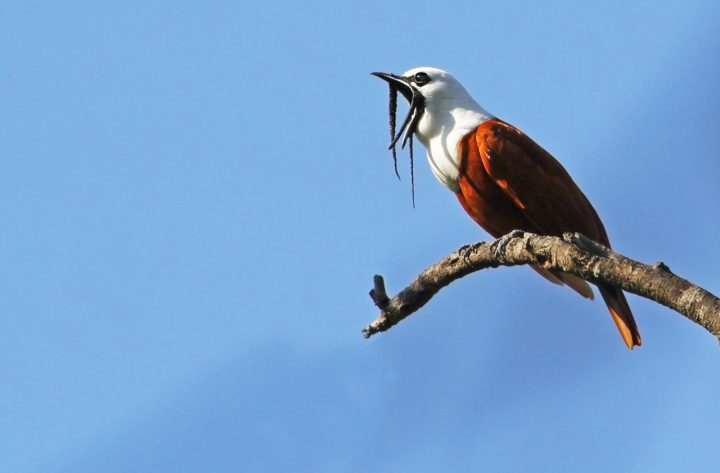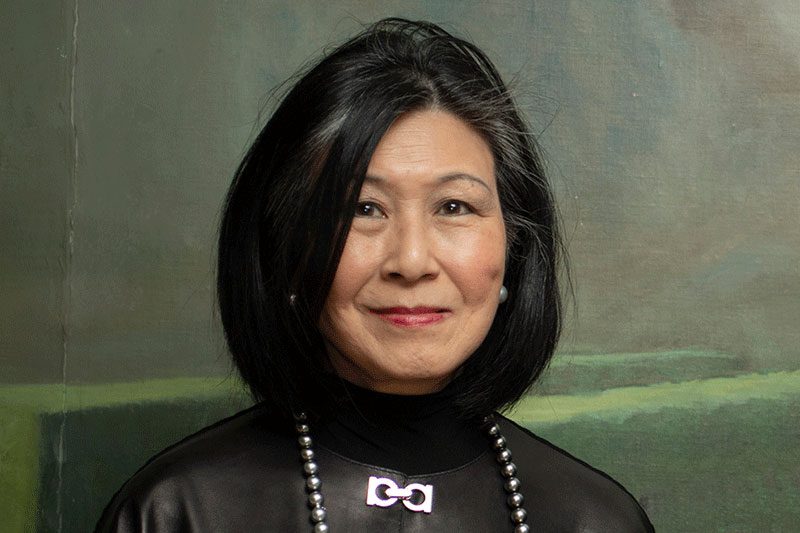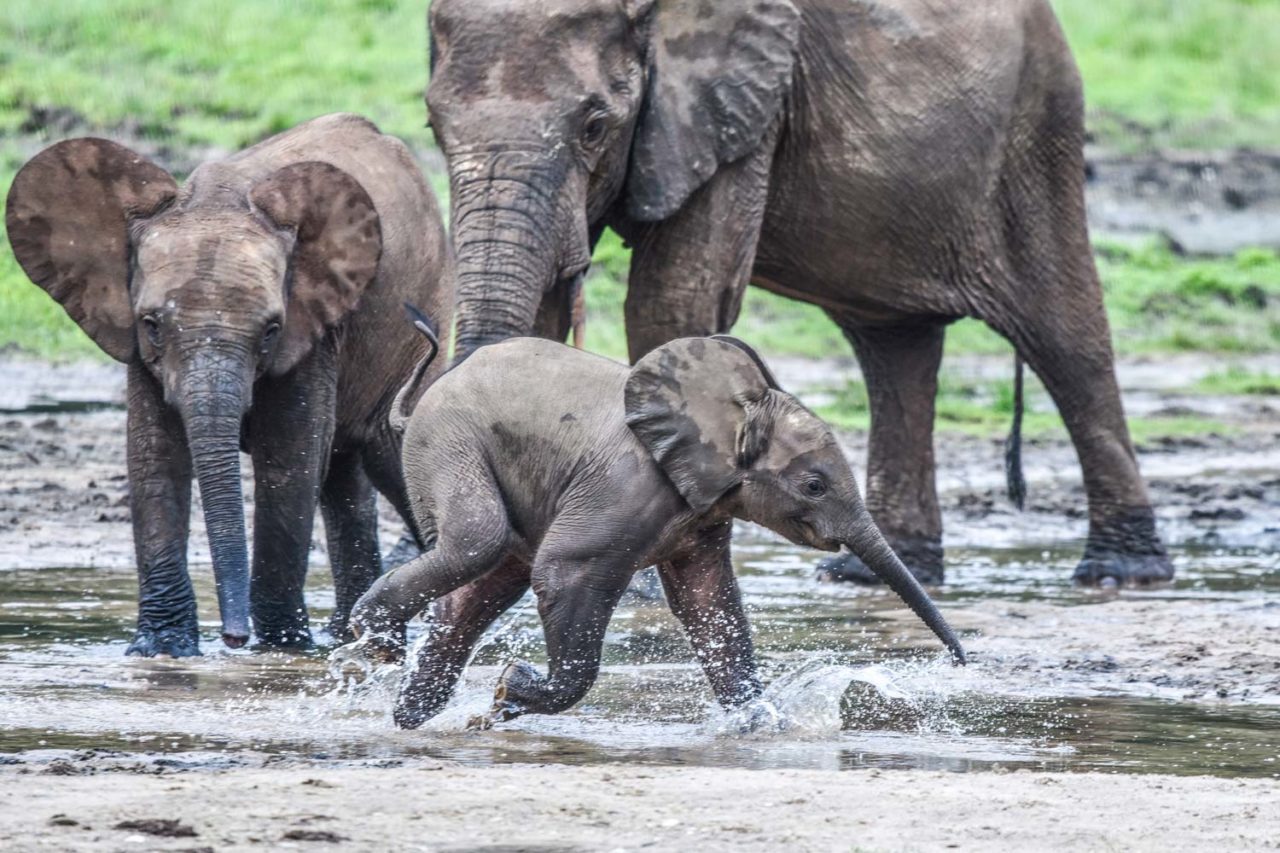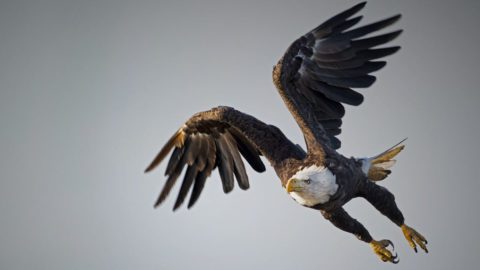Lab’s Largest Ever Gift Establishes K. Lisa Yang Center for Conservation Bioacoustics
By Hugh Powell
June 4, 2021
From the Summer 2021 issue of Living Bird magazine. Subscribe now.
The Cornell Lab of Ornithology’s groundbreaking Center for Conservation Bioacoustics will begin a new era of innovation thanks to a major gift from the philanthropist and Lab Advisory Board member K. Lisa Yang. The gift of $24 million, announced today at the Lab’s spring board meeting, is the largest one-time gift in the Lab’s history.
In addition to naming the K. Lisa Yang Center for Conservation Bioacoustics, the gift endows the John W. Fitzpatrick Directorship for the center. The name honors the Lab’s longtime leader, who is stepping down this summer, and recognizes his vision in the need to invest in technology at the Lab.
“This gift is transformational for our role in bioacoustics research globally,” Fitzpatrick said. “It’s cementing the security of a globally excellent institution in perpetuity, and at the same time significantly increasing our ability to engage and train people in a variety of cultures worldwide.”
“We’re living in a tremendously exciting time for the kind of critically important, machine learning-driven research that’s happening at the Cornell Lab of Ornithology,” said President Martha E. Pollack. “Lisa Yang’s generous and timely gift will allow the Center for Conservation Bioacoustics team to keep doing the kind of high-impact terrestrial, aquatic, and marine bioacoustics research for which they are renowned.”

Beginning with work on whale and elephant communication in the 1980s, the Center for Conservation Bioacoustics was built on the idea that people urgently need information about ecosystem health, and studying sound is often the best way to get it.
To become leaders in the field, the Center’s researchers had to invent and build their own technology: recorders that could capture sounds at an ever-growing scale; software that could analyze and visualize the terabytes of data their recorders captured. Over the years, their work expanded to encompass birds, marine and terrestrial mammals, fish, frogs and toads, and insects.
Yet the pace of innovation was slowed by the need to win contracts and grants, said Holger Klinck, who has directed the Center since 2016. Yang has supported the Center’s work for many years. Now, this gift will provide much-needed flexibility to follow the science and serve community needs, easing the pressure of meeting funding cycles and the highly restricted priorities of grantors, Klinck said. “We can start to ask, where can we have the most impact in the world? And then target those areas and those projects and commit to them long term.”

At the same time, the group has made training, or “capacity building,” a priority, recognizing that lasting conservation cannot happen without partnerships with local scientists and communities.
“Many people are realizing the value of acoustics in conservation, but it is often the first time that they have worked with the technology, and there isn’t a local community that they can turn to for guidance.” Klinck said.
“This gift allows us to share the insights, tools, and equipment that we develop, while building a global network of people who can share acoustic analysis approaches and conservation strategies,” Klinck said. “In addition to sharing our own experience through workshops and seminars, we can help to connect people who are studying, say, rainforest conservation in central Africa with people who are working on similar challenges in Southeast Asia. This will be key to scaling up the use of acoustics in conservation.”
The twin commitments of technology and capacity building inspired Yang, who first learned of the Lab’s work during an open house event known as Migration Celebration. As people milled around exhibits, Yang struck up a conversation with research analyst Ashik Rahaman, who showed her instrumentation the group had developed to protect endangered North Atlantic right whales from ship collisions.
Yang is a prominent philanthropist and Cornell alumna who has previously supported autism and neuroscience research, workplace equity, international health, and other efforts through gifts to Cornell University, Harvard, MIT, Neurodiversity in the Workplace, and elsewhere. This gift, she said, is an investment in the Center’s unique approach, and ultimately its goal of conserving biodiversity in some of the most remote yet species-rich parts of the world.
Yang said she sees the role of technology at the Lab as similar to the bamboo scaffolds she used to see at building sites growing up in her native Singapore. Like scaffolding, she said, technological advances should be viewed as a framework that allows much larger ambitions to be achieved.
“I can’t save the world alone,” Yang said, “but I can focus the center’s strategy on translational science. So this gift is about technology as a means to conserve biodiversity and to invest in and empower people living in areas of immense biodiversity, essentially the lungs of the earth.”

All About Birds
is a free resource
Available for everyone,
funded by donors like you
American Kestrel by Blair Dudeck / Macaulay Library



